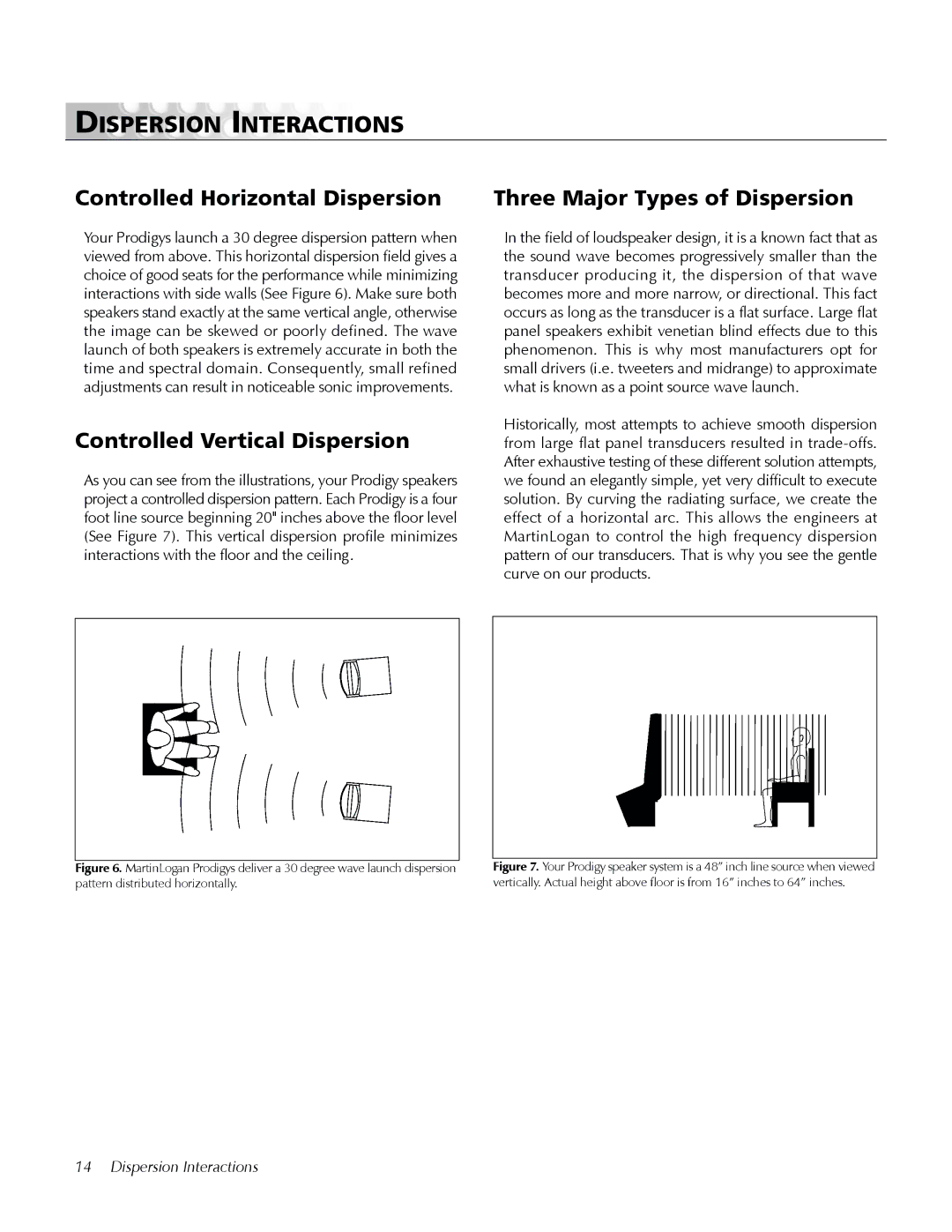
DISPERSION INTERACTIONS
Controlled Horizontal Dispersion
Your Prodigys launch a 30 degree dispersion pattern when viewed from above. This horizontal dispersion field gives a choice of good seats for the performance while minimizing interactions with side walls (See Figure 6). Make sure both speakers stand exactly at the same vertical angle, otherwise the image can be skewed or poorly defined. The wave launch of both speakers is extremely accurate in both the time and spectral domain. Consequently, small refined adjustments can result in noticeable sonic improvements.
Controlled Vertical Dispersion
As you can see from the illustrations, your Prodigy speakers project a controlled dispersion pattern. Each Prodigy is a four foot line source beginning 20" inches above the floor level (See Figure 7). This vertical dispersion profile minimizes interactions with the floor and the ceiling.
Figure 6. MartinLogan Prodigys deliver a 30 degree wave launch dispersion pattern distributed horizontally.
Three Major Types of Dispersion
In the field of loudspeaker design, it is a known fact that as the sound wave becomes progressively smaller than the transducer producing it, the dispersion of that wave becomes more and more narrow, or directional. This fact occurs as long as the transducer is a flat surface. Large flat panel speakers exhibit venetian blind effects due to this phenomenon. This is why most manufacturers opt for small drivers (i.e. tweeters and midrange) to approximate what is known as a point source wave launch.
Historically, most attempts to achieve smooth dispersion from large flat panel transducers resulted in
